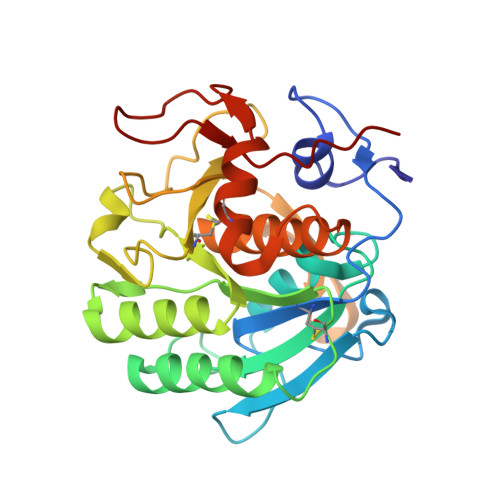Structure Determination from Lipidic Cubic Phase Embedded Microcrystals by MicroED.
Zhu, L., Bu, G., Jing, L., Shi, D., Lee, M.Y., Gonen, T., Liu, W., Nannenga, B.L.(2020) Structure 28: 1149-1159.e4
- PubMed: 32735770
- DOI: https://doi.org/10.1016/j.str.2020.07.006
- Primary Citation of Related Structures:
6PQ0, 6PQ4 - PubMed Abstract:
The lipidic cubic phase (LCP) technique has proved to facilitate the growth of high-quality crystals that are otherwise difficult to grow by other methods. However, the crystal size optimization process could be time and resource consuming, if it ever happens. Therefore, improved techniques for structure determination using these small crystals is an important strategy in diffraction technology development. Microcrystal electron diffraction (MicroED) is a technique that uses a cryo-transmission electron microscopy to collect electron diffraction data and determine high-resolution structures from very thin micro- and nanocrystals. In this work, we have used modified LCP and MicroED protocols to analyze crystals embedded in LCP converted by 2-methyl-2,4-pentanediol or lipase, including Proteinase K crystals grown in solution, cholesterol crystals, and human adenosine A 2A receptor crystals grown in LCP. These results set the stage for the use of MicroED to analyze microcrystalline samples grown in LCP, especially for those highly challenging membrane protein targets.
- Biodesign Center for Applied Structural Discovery, Biodesign Institute, Arizona State University, 727 East Tyler Street, Tempe, AZ 85287, USA; School of Molecular Sciences, Arizona State University, 551 East University Drive, Tempe, AZ 85287, USA.
Organizational Affiliation:


















